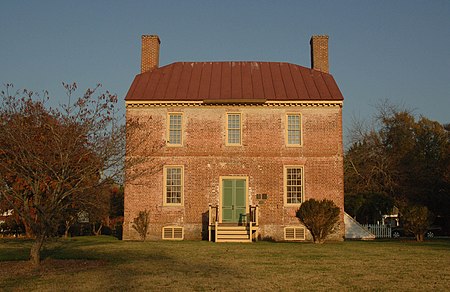Cappahosic House
1751 establishments in VirginiaArchaeological sites on the National Register of Historic Places in VirginiaGeorgian architecture in VirginiaGloucester County, Virginia geography stubsHistoric American Buildings Survey in Virginia ... and 6 more
Houses completed in 1751Houses in Gloucester County, VirginiaHouses on the National Register of Historic Places in VirginiaMiddle Peninsula Registered Historic Place stubsNational Register of Historic Places in Gloucester County, VirginiaUse mdy dates from August 2023

Cappahosic House, also known as Baytop House and Cappahosic Ferry House, is a historic home located near Gloucester, Gloucester County, Virginia. It was built in around 1751, and is a two-story, three bay brick dwelling in the Georgian style. It has a basement and is topped by a standing seam jerkinhead red tin roof. The main block is connected in the rear to a two-story modern addition. Also on the property are contributing archaeological deposits dating principally to the 18th and 19th centuries. The house is believed to be on the site of an 18th-century ferry used to cross the York River.It was added to the National Register of Historic Places in 2003.
Excerpt from the Wikipedia article Cappahosic House (License: CC BY-SA 3.0, Authors, Images).Cappahosic House
Cappahosic Road,
Geographical coordinates (GPS) Address Nearby Places Show on map
Geographical coordinates (GPS)
| Latitude | Longitude |
|---|---|
| N 37.380277777778 ° | E -76.633333333333 ° |
Address
Cappahosic Road 3184
23061
Virginia, United States
Open on Google Maps



